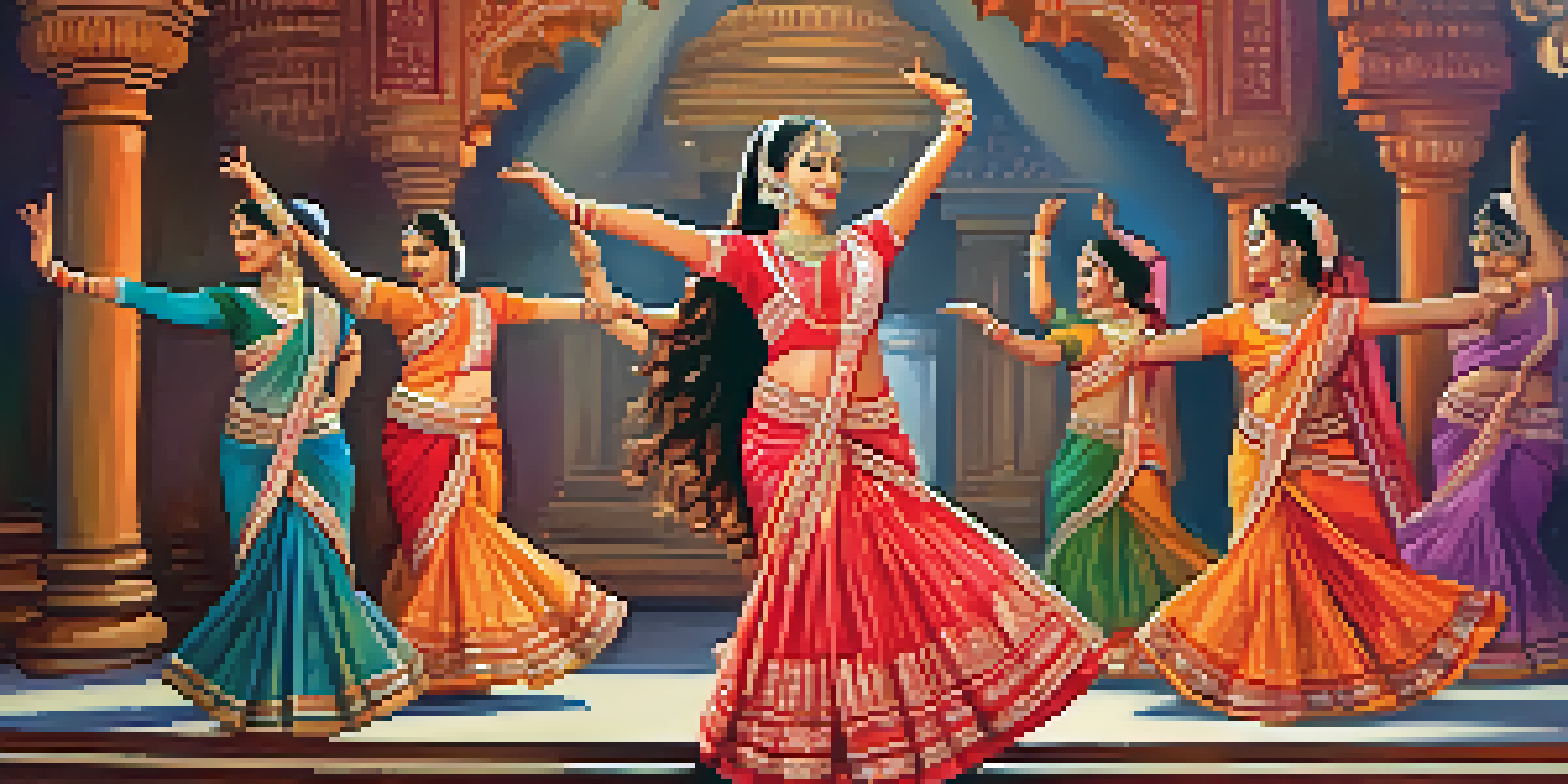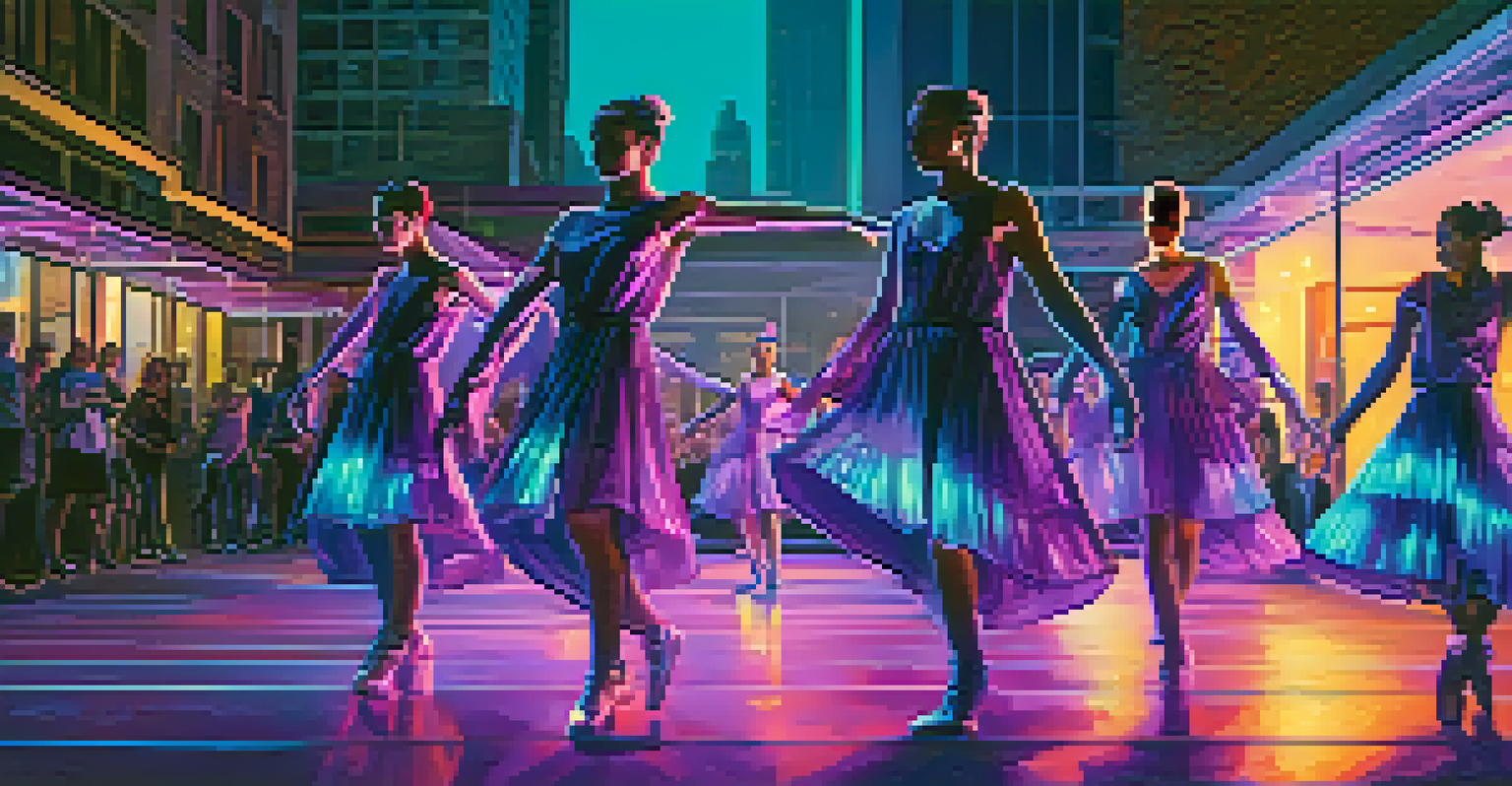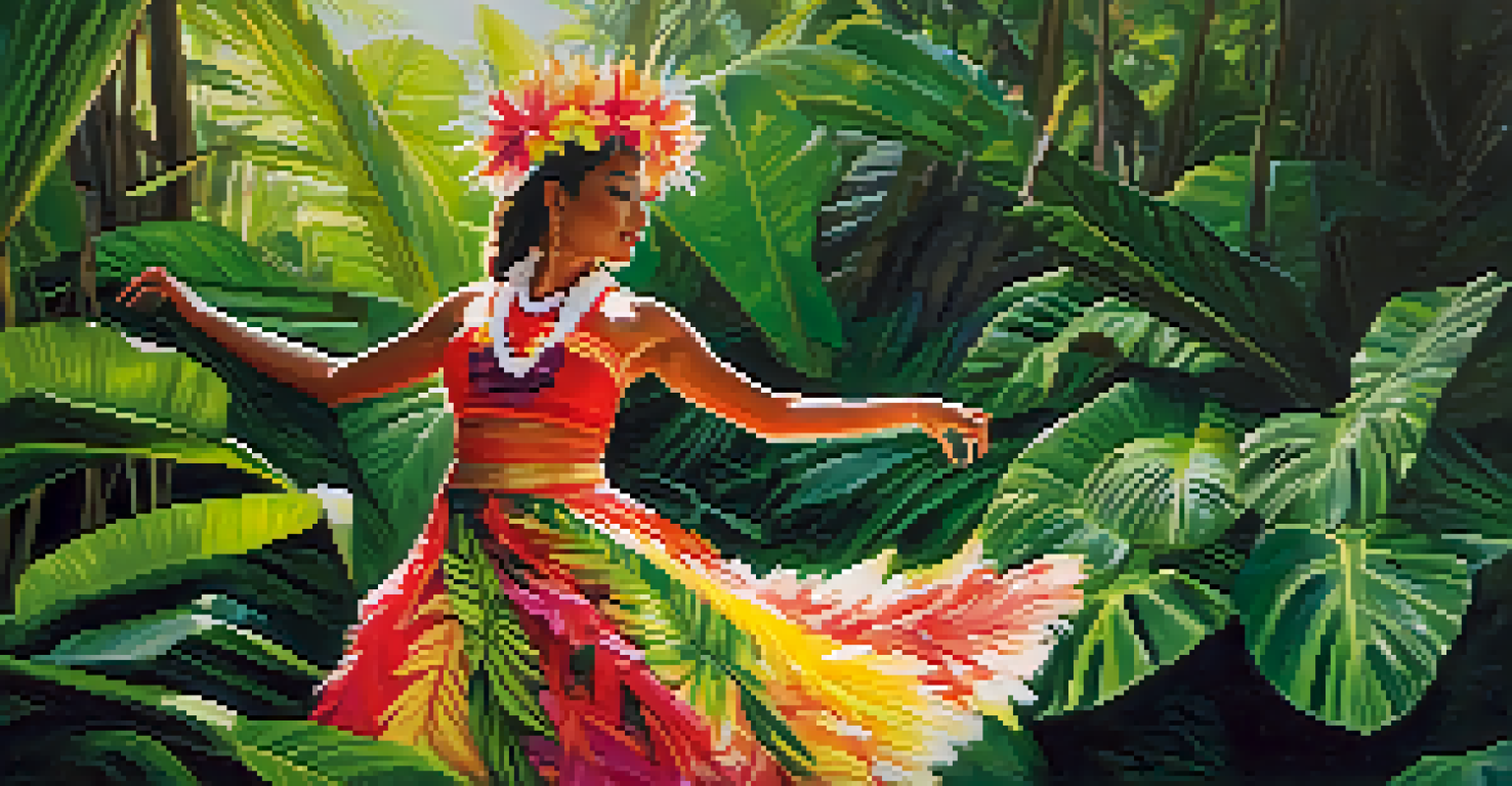Cultural Influences on Dance Costume Design: A Global View

The Role of Culture in Shaping Dance Costumes
Dance costumes serve as a visual representation of a culture's history and values. They reflect regional traditions, social norms, and even historical events. For example, traditional Indian dance often incorporates intricate saris and vibrant colors that symbolize different regions of the country.
Dance is the hidden language of the soul.
Understanding a dance form’s cultural context can enhance appreciation for the art itself. Costumes can tell stories, expressing the emotions and narratives inherent in the dance, while also connecting the dancer to their heritage. This cultural connection can be particularly profound in folk dances, where costumes are integral to the performance.
As the world becomes increasingly interconnected, the blending of cultural influences is also evident in dance costumes. This fusion can create innovative designs that honor multiple traditions, showcasing the beauty of diversity in dance.
Historical Influences on Dance Costume Design
Throughout history, dance costumes have evolved alongside societal changes. The Renaissance period, for example, saw the introduction of elaborate garments that reflected the opulence of the time. In contrast, simpler attire emerged during periods of social upheaval, emphasizing practicality and ease of movement.

Costumes in ballet have also transformed over the centuries, shifting from heavy, ornate dresses to the more streamlined tutus we recognize today. This evolution mirrors the changing perceptions of femininity and the role of women in society, illustrating how dance and culture are intricately linked.
Cultural Reflection in Costumes
Dance costumes visually represent a culture's history and values, connecting performers to their heritage.
Moreover, historical events such as wars or revolutions often impact costume design, as seen in the emergence of traditional attire in response to colonial influences. By examining these historical contexts, we can better appreciate how dance costumes embody the spirit of their time.
Regional Variations in Dance Costume Styles
Around the world, dance costumes vary significantly from region to region, reflecting local customs, climates, and materials. For example, the feathered headdresses of Hawaiian hula dancers contrast sharply with the flowing, layered skirts of Mexican folklorico performers, each uniquely suited to their cultural narratives.
Costume design is a key component of storytelling in dance, as it provides insight into the characters and the narrative.
Environmental factors also play a role; lighter fabrics are common in tropical areas, while heavier materials are used in colder climates. This regional adaptation not only enhances comfort for the dancer but also adds to the visual storytelling of the performance.
These variations highlight the richness of global dance traditions, reminding us that each costume is a piece of art that carries the weight of cultural significance. Understanding these differences can deepen our appreciation for the diverse tapestry of dance worldwide.
Symbolism in Dance Costumes
Many dance costumes incorporate symbols that convey deeper meanings, often rooted in cultural beliefs and traditions. For instance, in African dance, colors and patterns can represent specific tribal affiliations or spiritual connections, making each performance a celebration of identity.
Similarly, in classical Indian dance forms like Bharatanatyam, costumes are adorned with motifs that narrate ancient stories and deities, allowing the audience to connect more intimately with the performance. This rich symbolism transforms costumes into storytelling tools that enhance the overall experience.
Historical Changes in Design
The evolution of dance costumes mirrors societal shifts, with styles adapting to reflect changing norms and historical events.
By understanding these symbols, audiences can gain insights into the cultural significance behind the movements and music, creating a more immersive experience. This layer of meaning adds depth to the visual beauty of dance costumes.
Modern Influences on Dance Costume Design
In contemporary dance, costume design often breaks from tradition, embracing innovative materials and styles. Designers are experimenting with technology, integrating LED lights or even wearable tech to create dynamic visuals that enhance performances. This modern twist reflects the ever-evolving nature of dance itself.
Moreover, social media and global connectivity have led to a greater exchange of ideas in costume design. Dancers and choreographers can now draw inspiration from various cultures, leading to eclectic styles that merge traditional elements with modern aesthetics.
This blending of old and new not only keeps dance relevant but also fosters a sense of global community among artists. The result is a vibrant landscape of dance costume design that honors the past while boldly stepping into the future.
The Influence of Fashion on Dance Costumes
Fashion trends significantly impact dance costume design, as designers often borrow elements from high fashion to create visually striking performances. For example, the use of asymmetrical cuts or bold patterns seen on runways can easily translate into the world of dance, making costumes more relatable to contemporary audiences.
This interplay between fashion and dance can also lead to collaborations between choreographers and fashion designers, resulting in unique productions that stand out. Such partnerships can elevate the aesthetic appeal of a performance while pushing creative boundaries.
Modern Innovations in Costumes
Contemporary dance costumes are increasingly influenced by technology and fashion trends, blending traditional elements with modern aesthetics.
However, this relationship also raises questions about authenticity and cultural appropriation, as designers must navigate the fine line between inspiration and exploitation. Ultimately, it’s essential for artists to engage respectfully with the cultures they draw from, ensuring that costumes honor rather than dilute their origins.
The Future of Dance Costume Design
As we look ahead, the future of dance costume design promises even more exciting innovations. Sustainability is becoming a key focus, with designers seeking eco-friendly materials and production methods that minimize waste. This shift reflects a growing awareness of environmental issues within the dance community.
Additionally, the rise of virtual and augmented reality in performances may redefine how costumes are designed and experienced. Imagine a dance performance where costumes transform dynamically on-screen, creating an immersive experience that blurs the lines between reality and digital art.

The future is bright for dance costume design, as artists continue to explore new ideas while remaining rooted in their cultural heritage. This ongoing evolution will undoubtedly lead to fresh and inspiring interpretations of dance across the globe.